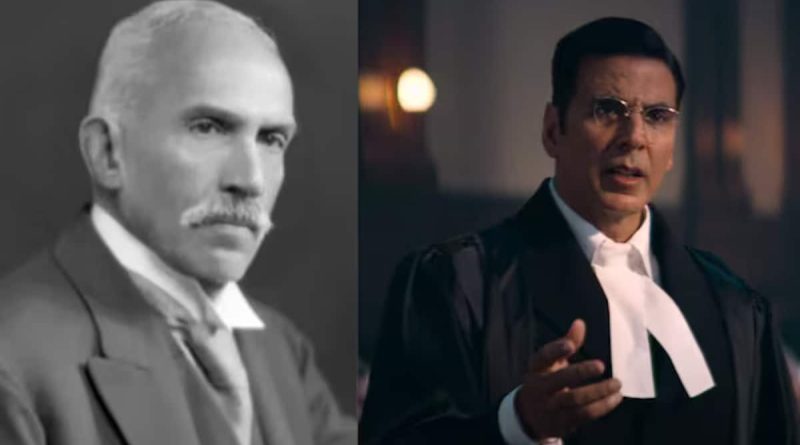Who Is Lawyer C Sankaran Nair and Why His Story Needs To Be Told
Bollywood’s Upcoming Release: Kesari: Chapter 2
As Bollywood anticipates the release of Kesari: Chapter 2 on April 18, 2025, all eyes are on Akshay Kumar, who takes on the role of Sir Chettur Sankaran Nair. While Nair may not be a household name, his contributions to India’s fight against colonial oppression were pivotal.
The Story Behind the Film
Directed by newcomer Karan Singh Tyagi and produced by Karan Johar, the film is rooted in the historical account, The Case That Shook the Empire, penned by Nair’s great-grandson, Raghu Palat, and his wife, Pushpa Palat. The narrative brings to light one of the darkest chapters in British colonial history—the Jallianwala Bagh massacre—and the consequential courtroom battle led by a man of unwavering beliefs.
The Early Life and Career of Sir Chettur Sankaran Nair
Born in 1857 in the village of Mankara in Kerala’s Palakkad district, Sir Chettur Sankaran Nair belonged to an aristocratic lineage closely connected to the East India Company. His academic journey took him to Presidency College, Madras, where he discovered his passion for law. In 1880, he embarked on his legal career at the High Court of Madras, under the mentorship of Sir Horatio Shepherd, who would later ascend to the role of Chief Justice. Nair’s brilliance and fierce independence quickly became evident.
A Maverick in the Legal World
Throughout his legal career, Nair was known for his refusal to conform. Early on, he challenged a resolution by Indian vakils (lawyers) of Madras that discouraged working under English barristers. To Nair, professional choices should be dictated by merit and client interest rather than nationalism or peer pressure. Despite facing a boycott from fellow lawyers, he remained steadfast in his beliefs.
Pathbreaking Judgments and Political Tenure
Appointed as Advocate-General and later a judge of the Madras High Court, Nair’s judicial career was marked by bold judgments. He supported inter-caste and inter-religious marriages, challenging the rigid orthodoxy of caste-based discrimination. His landmark 1914 ruling in Budasna v Fatima declared that converts to Hinduism should not be considered outcastes, setting a precedent for future cases.
Nair’s Political Involvement
In 1897, Nair became the youngest president of the Indian National Congress and the only Malayali to hold the position. He was unafraid to challenge the Anglo-Indian elite, the Brahmin establishment, or the British authorities. His involvement in the Montagu-Chelmsford reforms and advocacy for greater Indian participation in governance saw him inducted into the Viceroy’s Executive Council by 1915, where he oversaw the education portfolio.
The Jallianwala Bagh Massacre and Its Aftermath
On April 13, 1919, British Brigadier General Reginald Dyer ordered troops to fire on a peaceful gathering at Amritsar’s Jallianwala Bagh. Hundreds of unarmed civilians, including women and children, were killed, marking a turning point in India’s freedom struggle. As the sole Indian member of the Viceroy’s Executive Council at the time, Nair resigned in protest against the government’s defense of the massacre, a move that was both unprecedented and audacious.
The Trial that Shook the Empire
In 1922, Nair published Gandhi and Anarchy, criticizing British colonial rule and blaming Michael O’Dwyer, the then-Lieutenant Governor of Punjab, for the Jallianwala Bagh atrocities. Infuriated, O’Dwyer sued Nair for defamation in an English court. The subsequent trial at the King’s Bench in London was historic, lasting five and a half weeks and becoming the longest-running civil trial of its time. Despite being tried in front of an all-English jury and a biased Justice Henry McCardie, Nair stood his ground.
A Moral Victory
Although the verdict went against Nair, with 11 jurors to one, and he was fined 500 Pounds along with trial expenses, he refused to apologize when O’Dwyer offered to waive the penalty. Nair’s defiance brought international attention to British atrocities in India and galvanized nationalist resolve. His loss became India’s gain.
A Legacy Unforgotten
Nair passed away in 1934, leaving a legacy that remains under-acknowledged. His descendants continued his legacy, with his grandson Kunhiraman Palat Candeth playing a crucial role in the liberation of Goa in 1961. Other family members have also held notable positions in Indian public life.
The Cinematic Tribute
More than just a jurist or politician, Sir Chettur Sankaran Nair was a man of unwavering integrity who refused to bow to injustice. In an era of silence, he wielded his voice and pen with courage. With Kesari: Chapter 2, his story will finally receive the cinematic tribute it deserves. In a time of manufactured heroes, here is a real one, and his story, now more than ever, demands to be heard.

